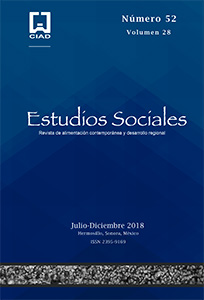Valoración económica del consumo y producción de materias primas para la fabricación de biodiésel en Guatemala
Economic valuation of consumption and production of raw materials for the manufacturing of biodiesel in Guatemala
Abstract
Objective: make an economic valuation of the consumption and production of raw materials for the production of biodiesel in Guatemala. Methodology: was the Contingent Valuation Method (MVC) to estimate the economic-environmental value that consumers and producers give to the production of the raw materials Higuerillo (Ricinus communis) and Piñón (Jatropha curcas) for the generation of biodiesel. In the case of the African Palm (Elaeis guinnensis), the valuation method called Productivity Change was used to establish the surplus of the producer and the Contingent Valuation Method to determine the consumers surplus. Results: The results of the environmental economic valuation analysis, report total welfare or surpluses for the consumption of biodiesel. The production of the three raw materials at present value in the order of US $71 billion for a period of fifteen years and with the goal replacing 80% of diesel with biodiesel with the cultivation and production of 374,832 hectares. Of this total surplus, 99.76% is given by the consumer’s surplus that the welfare of the producers of raw materials at current value was estimated at US $169 million. Limitations: are those of the economic valuation methodology that was used, since generating hypothetical markets can lead to information biases that are reduced by the statistical techniques used. Conclusions: it is recommended that the allocation of resources should be oriented to the demand of the buyers that most value the consumption of biodiésel, that is to say those that show a greater disposition to pay (DAP).
Keywords:
regional development, economic valuation, social welfare, consumer and producer surplus, contingent valuation method, productivity.Abstract
Objective: make an economic valuation of the consumption and production of raw materials for the production of biodiesel in Guatemala. Methodology: was the Contingent Valuation Method (MVC) to estimate the economic-environmental value that consumers and producers give to the production of the raw materials Higuerillo (Ricinus communis) and Piñón (Jatropha curcas) for the generation of biodiesel. In the case of the African Palm (Elaeis guinnensis), the valuation method called Productivity Change was used to establish the surplus of the producer and the Contingent Valuation Method to determine the consumers surplus. Results: The results of the environmental economic valuation analysis, report total welfare or surpluses for the consumption of biodiesel. The production of the three raw materials at present value in the order of US $71 billion for a period of fifteen years and with the goal replacing 80% of diesel with biodiesel with the cultivation and production of 374,832 hectares. Of this total surplus, 99.76% is given by the consumer’s surplus that the welfare of the producers of raw materials at current value was estimated at US $169 million. Limitations: are those of the economic valuation methodology that was used, since generating hypothetical markets can lead to information biases that are reduced by the statistical techniques used. Conclusions: it is recommended that the allocation of resources should be oriented to the demand of the buyers that most value the consumption of biodiésel, that is to say those that show a greater disposition to pay (DAP).
Keywords:
regional development, economic valuation, social welfare, consumer and producer surplus, contingent valuation method, productivity.Downloads
Published
How to Cite
Issue
Section
Para que sean publicados artículos, ensayos y reseñas críticas en Estudios Sociales, la revista debe contar con la aceptación de parte de los autores/autoras de las condiciones siguientes:
1. Los autores conservan los derechos de autor y ceden a la revista el derecho de la primera publicación del trabajo registrado bajo la licencia de Creative Commons Reconocimiento-NoComercial (CC-By-NC) que permite a terceros utilizar lo publicado, siempre y cuando mencionen la autoría del trabajo y a la primera publicación en esta revista.
2. Los autores pueden realizar otros acuerdos contractuales independientes y adicionales para la distribución no exclusiva de la versión del artículo publicado en esta revista (por ejemplo: incluirlo en un repositorio institucional o publicarlo en un libro) siempre y cuando indiquen, claramente, que el trabajo se publicó por primera vez en esta revista.




















